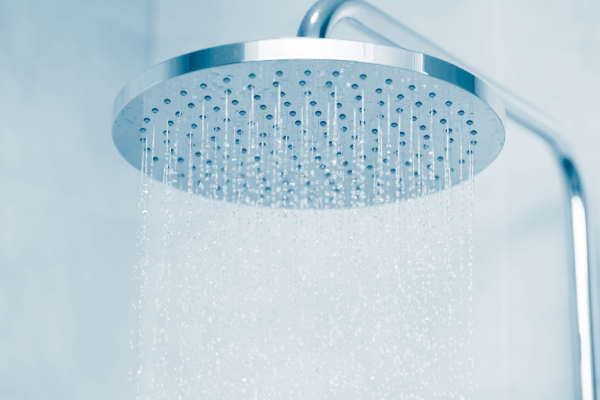Why Is My Water Pressure So Low?
Most homeowners have experienced days when their water flows slower in their homes than expected. It can be a very frustrating experience that happens when you least expect it. You are ready to take a hot shower after a long day at work, and instead of enjoying water spray, the showerhead releases some slow streams.
Additionally, with slower water pressure, your bathtub or sink may take too long to fill. The dishwasher and washing machines will take longer to cycle, too. Luckily, there are various ways to identify when you have low water pressure. While you can quickly fix some issues, other tasks require professional assistance. Here are several causes of low water pressure that you should know about.
1. Problems in the Main Supply Line
Before anything else, it is good to confirm whether your neighbors are experiencing the same problem. At times, the low water pressure might not be connected with your house. First, call your water supplier to confirm whether they are working on any project that could affect the pressure. If they are already addressing the problem, you will just have to wait.
Additionally, your city council might have set some water regulations, and your supplier needs to comply. In such a case, you can buy a pressure booster system and have a professional install it to achieve sufficient water flow.
Other times, you might have done fixture remodeling, and now your main supply line cannot meet the demands. Have a plumber determine the fixture’s compatibility with the existing supply before fixing it.
2. Water Meter Valve Is Shut
If you recently had plumbing work done in your house and experienced low water pressure later, check the main water valve. Chances are, the plumber did not fully open the valve after completing the job.
You will most likely find the meter valve outside the house on an attached box in the garage’s exterior. Some can be difficult to access, especially those located underground. Either way, someone will need to open the valve completely to fix the pressure issue.
3. Main House Shutoff Valve Is Not Fully Open
Check the main shutoff valve, located inside the house, near the main supply pipe. When it is partially open, the valve limits water flow to your residence. If it has a gate valve, turn it in a counterclockwise direction, as far as it can go. For those with a lever valve, turn it until it is parallel with the water pipe.
4. Failing Pressure Regulator
Another problem that affects water pressure at home is a faulty pressure regulator. If all of your neighbors have a good water flow while yours is still low, check whether you have a pressure regulator. Note that not all properties have this device, but if the former homeowner had installed one, it could affect water pressure.
Its primary role is to limit water pressure from the supply lines to safe levels. Nonetheless, if it fails, it can push the water pressure up or down very low. Fix a water pressure gauge to the exterior spigot near the pressure regulator and take readings. If it is somewhat lower than what the pressure regulator indicates, you need to replace it.
5. Clogged Pipes
If you notice slow pressure from various faucets in your house, most likely, it is due to debris buildup. These clogs can happen anywhere throughout the plumbing system. When sediments disrupt the water flow, the pressure goes down as well.
If you have a water heater, it would be best to drain it often to remove any sediments that can cause a blockage. On the other hand, calcium and other mineral deposits can accumulate and clog the tiny showerhead holes. If you notice low pressure from a single pipe, check the nozzle for sediment accumulation.
This problem is prevalent in areas with a hard water supply. Temporarily, you can remove the limescale from your fixtures by using vinegar. It soaks up and loosens the deposits. The last thing you would ever experience is tearing apart pipes and not being in a position to put them back together correctly. Hence, it would be best to seek help from a qualified plumber.
6. Old Corroded Pipes
The most expensive cause of low water pressure is corroded water pipes. If you live in an older home, you need to inquire about the plumbing system’s state from the previous home occupants. Galvanized steel water pipes begin to corrode as quickly as after 20 years. As a result, rust will build up, limiting water flow, and the pressure will reduce, too.
Additionally, if you add modern appliances to your plumbing system like washing machines, they can overwork your pipes, causing them to corrode faster. In such a case, you need to enlarge branch lines to meet the increased water demand. Unfortunately, the only solution for corroded pipes is to have the entire plumbing system replaced with copper or plastic ones.
7. Water Leaks
Leaks misdirect the water flow, and this could be the reason why you have low pressure. Look around your basement or garage to detect any water drip signs from the main supply line. Do not ignore pipe leaks in your residence since they can contaminate your water and extensively damage your property. Even a small opening can increase your water bills.
To avoid this, shut off the water supply and then dry the leaking spot completely. Using electrical tape or a pipe repair clamp, attach a rubber patch to the leaking hole. This will help prevent further damage for some time, especially if it is a little crack. For extensive leaks, call a plumber immediately.
8. Shared Pipelines
Your neighbors can also cause low water pressure in your house. If you use shared pipelines that supply water into different homesteads, it creates a high demand for the water. Hence, it might be challenging to maintain consistent water pressure.
Any time your neighbors are using the water, you will experience reduced pressure on your side. The easiest solution here is coordinating use. You will have to find out when your neighbors are not using their water and adjust your routine. If you find this unbearable, you can contact your water supplier and consider pipe replacement.
Conclusion
Slow water pressure can be very inconvenient. It is also an indication that your system needs immediate attention. Some people choose to fix plumbing issues by themselves to save on costs. However, since you are inexperienced in performing such tasks, you might end up causing worse and more expensive problems.
Sometimes, a seemingly simple issue can have a difficult solution. Professionals have the required tools to pinpoint any hidden problems in your system to prevent reoccurrences. If you notice any of the low water pressure causes discussed above, reach out to Crystal Blue Plumbing Heating & Air for professional assistance.
Our company has a team of certified plumbers who services like pipes, drains, trench sewer repairs, hydro jetting, shower repair and installation, and pipelining. You can also contact us for duct repair and replacement, dehumidifiers, ventilation, and other commercial project services.
In addition, we deal with heating and air conditioning replacements, installations, repairs, and maintenance. We offer comprehensive services throughout Sacramento County and the surrounding areas. Contact us today and book an appointment to enjoy unmatched services.







